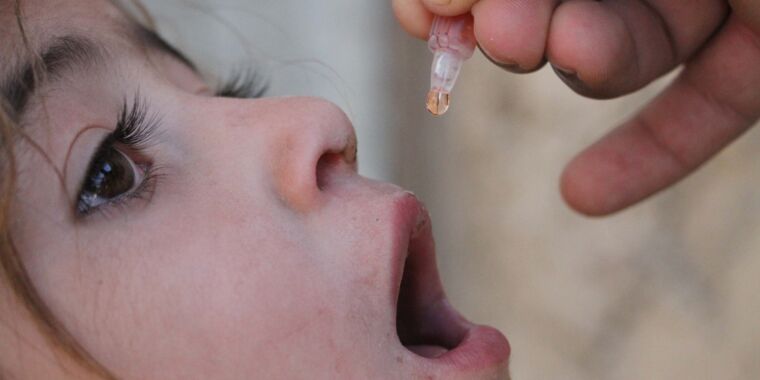
A vaccine-derived version of the polio virus has repeatedly surfaced in London’s sewers in recent months, suggesting there may be a cryptic or hidden spread among some unvaccinated people, British health officials announced on Wednesday.
To date, no cases of polio have been reported, nor have any cases of paralysis been identified. But sewer sampling at a London sewage treatment plant has repeatedly detected closely related vaccine-derived polioviruses between February and May. This suggests that “it is likely that there has been some spread between closely related individuals in north and east London and that they now shed the type 2 poliovirus strain in their feces,” the UK Health Security Agency (UKHSA) said.
While the current situation is alarming, the agency notes that it’s normal to see a small number of vaccine-like polioviruses appearing in the sewer from time to time, mostly from people recently vaccinated from the country. This is because many countries use oral polio vaccines that contain attenuated (weakened) polio viruses, which can still multiply in the gut and thus be present in the stool. They can also spread to others through poor hygiene and sanitation (ie, unwashed hands and food or water contaminated by sewage), which can become a concern with poor vaccination coverage.
How and why this happens?
Basically, there are two types of polio vaccines: the attenuated oral vaccines and the inactivated vaccines. Many high-income countries that are considered polio-free, including the UK and the US, use the inactivated vaccines, which do not contain viruses that can multiply or spread. These vaccines are very effective in preventing paralytic polio, but they do not produce high levels of local immune responses in the gut. So if a vaccinated person encounters the wild polio virus, the virus can still multiply and spread in their gut. In areas affected by wild polio outbreaks, this means the virus can continue to spread.
Oral polio vaccines, on the other hand, can not only prevent paralytic polio, they can also produce strong local immune responses in the gut that block the virus from multiplying there, interfering with its spread. These vaccines can also be more than five times cheaper than the inactivated kind. For all these reasons, oral polio vaccines are the primary vaccines used in the long, protracted battle to eradicate wild polio. Currently, wild polio is still found in Afghanistan and Pakistan, and Malawi and Mozambique have recently reported some cases.
But one of the drawbacks of oral polio vaccines is that vaccinated people can shed the attenuated vaccine virus in their feces for several weeks after vaccination. If this happens in a community with poor sanitation, hygiene and low vaccination coverage, the vaccine virus can spread from person to person. Over time, as the vaccine virus spreads to more people, it can pick up mutations that make it more like wild-type polio, making it again capable of causing disease and, in rare cases, paralysis in unvaccinated people. At this point, the mutated vaccine virus is termed “vaccine-derived poliovirus” or VDPV. Recently, cases of VDPV have been reported from several African countries and Israel.

